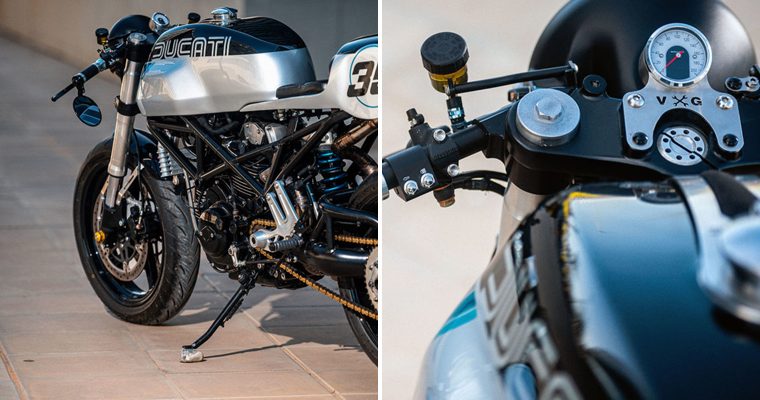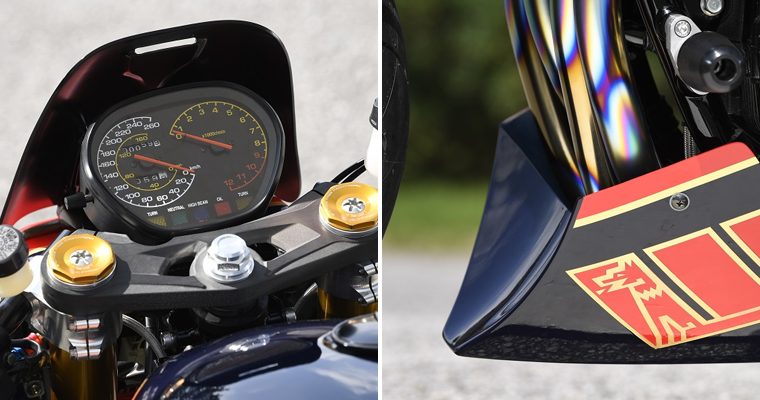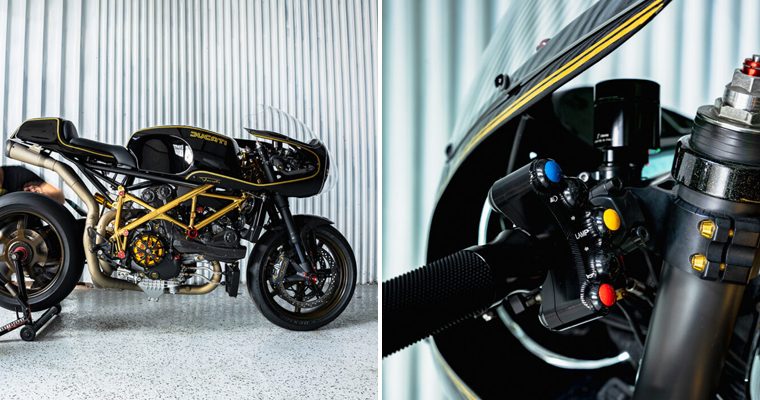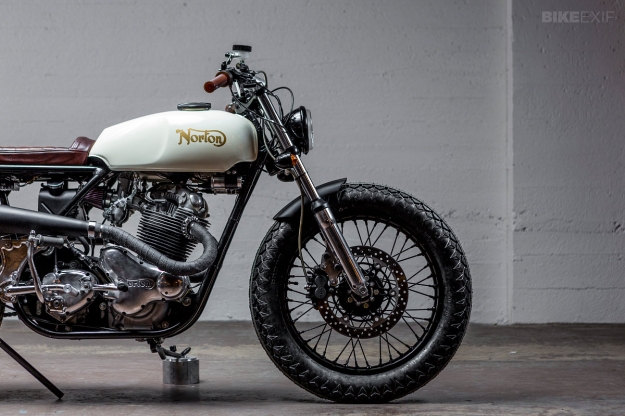 There’s a new name to look out for on the custom scene: Federal Moto. It’s a startup workshop from Canada, and this remarkable Norton 850 Commando resto-mod is the company’s first build.
There’s a new name to look out for on the custom scene: Federal Moto. It’s a startup workshop from Canada, and this remarkable Norton 850 Commando resto-mod is the company’s first build.
The guys behind Federal are friends Shaun Brandt, Randy Venhuis, and Justin Benson. Their purpose is simple: create one-of-a-kind custom motorcycles, with functional riding gear to follow.
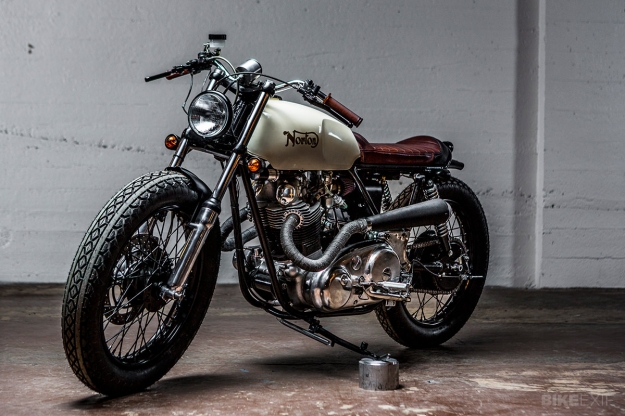 For their first bike build, the guys wanted to push the envelope of Western Canadian motorcycle culture. “Seventies Japanese bikes are a dime-a-dozen in farmers’ fields across BC, Alberta and Saskatchewan,” says Brandt.
For their first bike build, the guys wanted to push the envelope of Western Canadian motorcycle culture. “Seventies Japanese bikes are a dime-a-dozen in farmers’ fields across BC, Alberta and Saskatchewan,” says Brandt.
“British bikes are much tougher to come by, so they’re more expensive and less likely to be tinkered with. The ones you do see are usually restored to their original state.”
There’s a certain fear and responsibility that comes with re-imagining the rare, but following the status quo doesn’t inspire progression. Federal have diverted from the norm, and this build merits a close examination.
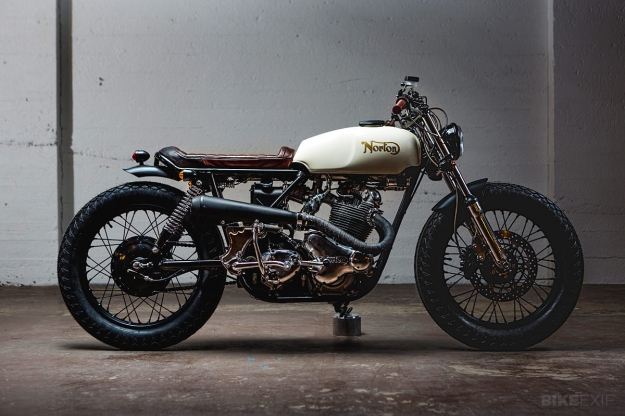 ‘The Ace’ is a 1974 Commando that was discovered on a farm in Rimbey, Alberta. It ran—barely—but had a ton of attitude, and that was enough. “We wanted to create a surf style tracker that you could ride around the city, or cruise through the Rockies all the way to the coast.”
‘The Ace’ is a 1974 Commando that was discovered on a farm in Rimbey, Alberta. It ran—barely—but had a ton of attitude, and that was enough. “We wanted to create a surf style tracker that you could ride around the city, or cruise through the Rockies all the way to the coast.”
Federal decided to maintain the soul of the bike, but made major design changes to the shape and feel. “We hope that the original employees at Norton would be fighting each other to take it for a spin if it rolled onto the factory floor.”
Federal took Norton right down to the frame. Commandos have a thick center tube that slants downward towards the tail of the bike, making it very difficult to create a line from headlight to taillight. So Federal cut the rear section of the tube out and reshaped the frame to have one clean line.
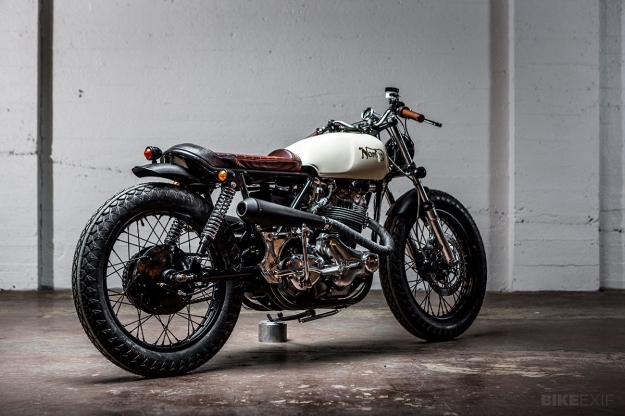 “It took some engineering, but we’ve welded and formed the frame to be just as strong as the original. After that we shortened the frame by 18 inches and shaped a new rear hoop. This was the beginning of the tracker shape we were going after.”
“It took some engineering, but we’ve welded and formed the frame to be just as strong as the original. After that we shortened the frame by 18 inches and shaped a new rear hoop. This was the beginning of the tracker shape we were going after.”
The wheels went back on, to gauge how beefy the tires could be. The winners were 19” Coker Diamond Treads that fit the era of the bike. Then every piece of excess metal was removed from the frame—including the tabs, the oil tank mounts, the fender mounts, the center stand, and the rear foot peg mounts. Anything that didn’t make the bike run.
“We cut nearly 30 pounds of weight. Before sending the frame to powder coating, we mounted brackets for a ’71 Norton oil tank, formed the seat pan, and machined new brackets for the fenders, lights, exhaust, and ignition.”
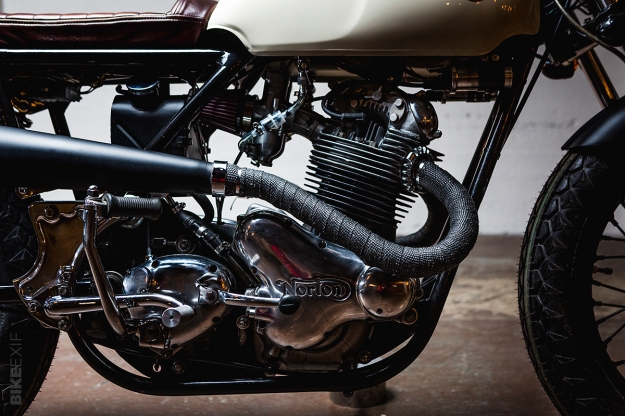 Salvageable parts were sanded and polished in-house, with replacement items sourced through local guru John Oland. “This build would not have been possible without John’s willingness to share his knowledge of vintage motorcycles. The guy is a legend,” says Brandt.
Salvageable parts were sanded and polished in-house, with replacement items sourced through local guru John Oland. “This build would not have been possible without John’s willingness to share his knowledge of vintage motorcycles. The guy is a legend,” says Brandt.
The engine itself is all original, aside from electronic ignition. Federal pulled it apart and inspected, cleaned and polished everything. They got the valves dialed in, bored the pistons, and replaced the piston rings. “Well worth it, considering it’s got even more compression than an industrial trash compactor!”
The fenders are mid-50s Triumph items rescued from a junk pile, reshaped and finished in matte black. For the exhaust pipework, Federal purchased ’71 Norton Commando SS pipes—and chopped about a foot off them, before attaching reverse megaphone mufflers from Australia’s Modern Motorcycle Company.
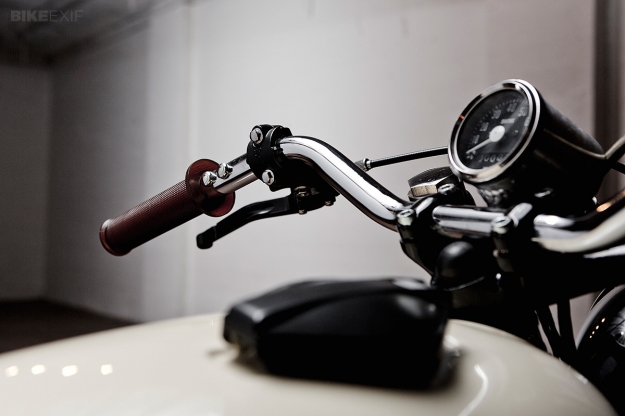 Tiny ‘bullet’ lights handle the blinking and braking duties, with a 5¾-inch black headlight up front—substantially lowered to maintain the lines of the bike. There’s a new wiring harness and an Antigravity 4-cell battery tucked under the seat. The bulky original instrumentation is gone, replaced by a mini version of the Smiths speedometer that can be seen on many vintage British bikes.
Tiny ‘bullet’ lights handle the blinking and braking duties, with a 5¾-inch black headlight up front—substantially lowered to maintain the lines of the bike. There’s a new wiring harness and an Antigravity 4-cell battery tucked under the seat. The bulky original instrumentation is gone, replaced by a mini version of the Smiths speedometer that can be seen on many vintage British bikes.
To keep the bars clean, Federal drilled them out and installed 12mm push buttons for the signals and horn. “We then drilled a hole in the headlight housing and installed an on/off switch, so that the 4-cell battery had enough power to start the bike—as opposed to having the headlight on when the ignition is running.”
All of this was brought together with a BSA A10/A65 Low handlebar, sticking to the bike’s British roots. Other final touches included 1970s Tommaselli Natural gum rubber grips, ordered direct from the factory in Italy, and simple footpegs machined in-house.
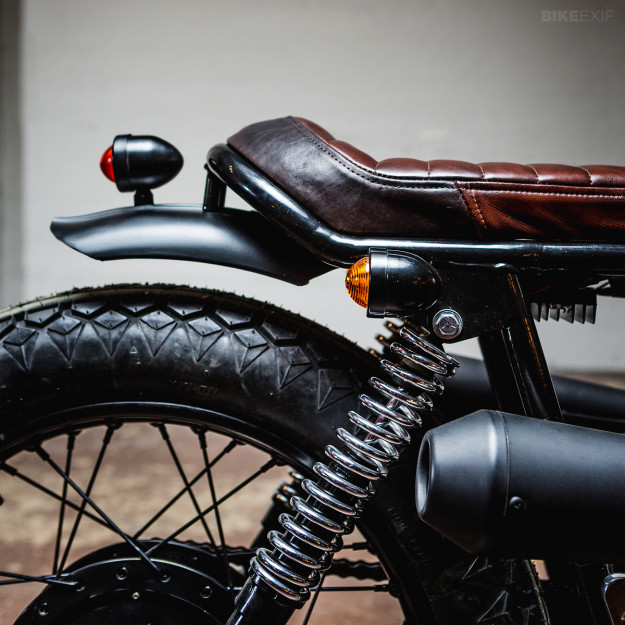 Federal kept the original rear brake, and replaced the front with a Tokico two-piston assembly and a Katana 750 rotor—machining a new mounting bracket for the forks.
Federal kept the original rear brake, and replaced the front with a Tokico two-piston assembly and a Katana 750 rotor—machining a new mounting bracket for the forks.
A custom two-tone Italian leather seat was sewn to perfection by local upholster Tyler Wheeler, keeping the transition seam angled inline with the frame piece that sits below it. The tank was sandblasted, the dents fixed, and then repainted in off-white with an original gold vinyl Norton logo. Last but not least, Federal sanded the crud off of the gas cap and coated it flat black, to pop off the tank.
The result is simply stunning, and all the more remarkable for being a new shop’s first build. The next bikes in the queue are a 1974 Honda CB360 and a 1971 BMW R75. We’ll be keeping an eye out for them.
If Edmonton, Alberta is too far to visit, the Federal Moto website and Facebook page are just a click away.





